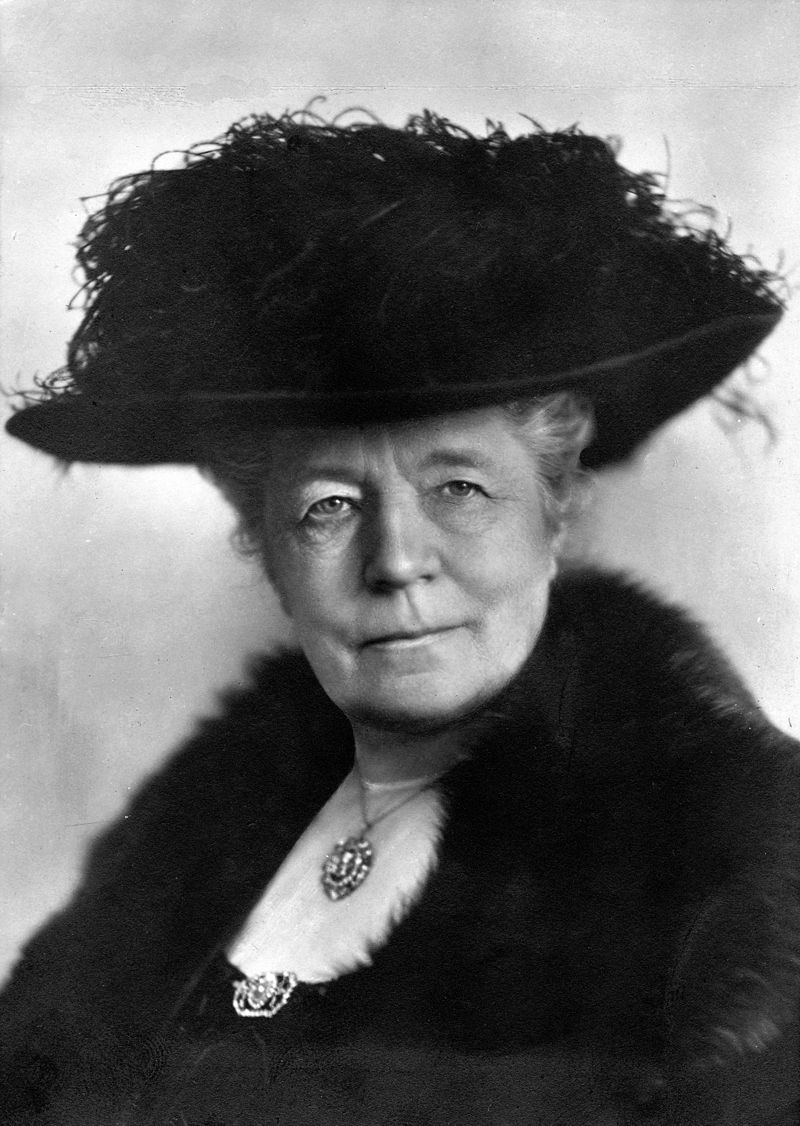Selma Lagerlöf: A Trailblazing Literary Icon
Selma Lagerlöf, born on November 20, 1858, in Mårbacka, Sweden, is a name that resonates with literary excellence and a pioneering spirit in the world of letters. As the first woman to win the Nobel Prize in Literature in 1909, Lagerlöf’s contributions to literature have left an indelible mark on both Swedish and global literary landscapes. Her works, rich in folklore, history, and the magical realism of her native Sweden, continue to captivate readers worldwide.

Early Life and Influences
Selma Ottilia Lovisa Lagerlöf was born into a relatively affluent family in the Värmland region of Sweden. Her father, Erik Gustaf Lagerlöf, was a lieutenant in the military, and her mother, Louise Wallroth, hailed from a family of clergymen and academics. The Lagerlöf family estate, Mårbacka, played a crucial role in shaping Selma’s imagination and future literary works. The stories she heard from her grandmother and the rich folklore of Värmland provided a fertile ground for her storytelling skills. Despite suffering from a hip ailment that left her with a limp, Selma displayed a keen interest in literature and storytelling from an early age. She was a voracious reader, immersing herself in the works of Dickens, Andersen, and other literary giants. However, her path to becoming a writer was not straightforward
Education and Early Career
In 1881, at the age of 23, Selma Lagerlöf left Mårbacka to pursue a career in teaching. She enrolled at the Royal Women’s Superior Training Academy in Stockholm, where she trained to become a teacher. During her time at the academy, Selma continued to nurture her passion for writing. Her experiences in Stockholm exposed her to new ideas and literary circles, further fueling her ambition to become a writer. After completing her education, Selma secured a teaching position in the town of Landskrona. It was during her time as a teacher that she began to work on her first novel, "Gösta Berling's Saga." Set in her beloved Värmland, the novel is a vivid portrayal of the life and adventures of a defrocked priest, Gösta Berling, and the colorful characters of the region. Blending realism with elements of folklore and the supernatural, the novel showcases Selma’s unique narrative style and deep connection to her cultural heritage.
Gösta Berling's Saga: The Breakthrough
Published in 1891, "Gösta Berling's Saga" (The saga of Gösta Berling) marked a significant turning point in Selma Lagerlöf’s career. The novel received critical acclaim and established her as a prominent figure in Swedish literature. Despite facing initial resistance from conservative critics who deemed her style too unconventional, the novel’s success proved that Selma’s voice was both powerful and necessary in the literary world. The publication of "Gösta Berling's Saga" not only brought Selma literary fame but also financial stability. The novel’s success allowed her to resign from her teaching position and dedicate herself entirely to writing. Selma's unique storytelling, characterized by its lyrical prose and deep empathy for her characters, resonated with readers and critics alike. Her ability to weave together elements of reality and fantasy created a distinctive literary style that set her apart from her contemporaries.
Read moreNils Holgersson’s Marvelous Journey: A Swedish Classic for All Ages
First published in 1906, "The Wonderful Adventures of Nils Holgersson" quickly became one of Selma Lagerlöf's most beloved works. Originally commissioned as a geography reader for Swedish schoolchildren, the novel transcended its educational purpose to become a cherished story worldwide. Through the eyes of Nils, a mischievous boy magically shrunk and taken on a journey across Sweden by a flock of geese, Lagerlöf masterfully combines folklore, adventure, and vivid descriptions of Sweden's diverse landscapes. The novel's success further solidified Lagerlöf's reputation as a pioneering storyteller and introduced generations of readers to the beauty and cultural richness of Sweden. Today, "Nils Holgersson" remains a timeless classic, celebrated for its imaginative narrative and educational value.
Read moreThe Jerusalem Novels and International Recognition
Following the success of "Gösta Berling's Saga," Selma Lagerlöf continued to produce a series of notable works. Among these were her "Jerusalem" novels, "Jerusalem I" (1901) and "Jerusalem II" (1902). These novels, inspired by real events, tell the story of a group of Swedish peasants who emigrate to Palestine in search of a better life. The Jerusalem novels reflect Selma’s deep interest in social and religious issues, as well as her ability to create complex, multi-dimensional characters. The international recognition of Selma Lagerlöf’s work grew steadily, and her novels were translated into several languages. Her literary achievements culminated in 1909 when she became the first woman to be awarded the Nobel Prize in Literature. The Nobel Committee recognized her “lofty idealism, vivid imagination, and spiritual perception” – qualities that had become hallmarks of her writing.

